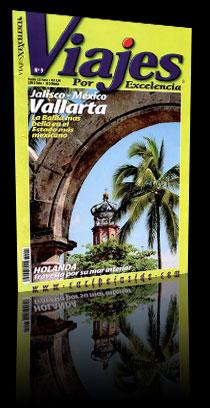JALISCO: MEXICO’S ARTISAN BLOOD
Each and every state has features of its own, and Jalisco is no exception to the rule. There are towns here that have produced some of the finest artisans in the country and around the world. Tonala and Tlaquepaque –both are pretty near Guadalajara, just a five-hour bus ride from Puerto Vallarta- are two cases in point.
Tonalá (from the Nahuatl term tonallan, meaning the place from where the sun goes up) was founded by Zapotec Indians that blended their race with other tribes, like the Tonaltecs, and imposed many of their own traditions. Since the pre-Hispanic age, Tonala has held a marketplace at the local square every Thursday. Indigenous people from different locations along the Atemajac Valley used to trade their merchandise there. As Spanish conquistadors settled down, the tradition was extended to all Sundays. Today, the marketplace gathers over 3,500 merchants alongside the Tonalatecas, Juarez, Madero and Lopez Pajar streets.
Tonala is in short a charming town. Getting there early to walk through the morning breeze and to visit the nearby churches is a fresh start that helps you follow the beats of the local residents. Later on, we can surrender to the “sacrifice” of a good shopping binge. Dozens and dozens of stores painted in motley colors sell clayware, wicker, canvass clothing, purses, candles, chinaware and everything you really want to buy. I suddenly felt like a child again and found myself pulling at my mother’s lap to make her buy me whatever I laid eyes on.
When dinnertime is close at hand, the best option is to hit the road leading to Tlaquepaque, at a five-minute cab ride from where we were. Since Spanish colonizers landed here in 1542, this was a town of earthenware pot makers. Now, the village has panned out to be Mexico’s largest handicraft plaza. The life of the town hinges on the Parian, the first building the city ever had and that visitors now swarm over for a glance at such curiosities as the world’s longest bar –sitting up to 2,000 patrons. We soon realized the bar had not been overstated as we saw scores of people walk in and even drag a bull inside for a butchers’ celebration.
Since no vehicles are allowed to circulate the streets, it’s easier to tour the shops and stores bursting at the seams with clay and iron items, clothes and furniture. But nothing compares to the earthenware pots these artisans make, like the ones the Panduro family has been creating for over 150 years. And amid so many stores and so much shopping around, villagersgo on with their daily lives, people hold their parties down and kids play in every garden and square. Some sightseeing spots in town are the Hidalgo Garden, the Pantaleon Panduro Museum, the El Refugio Cultural Center, the Regional Museum of Ceramics, and the churches.
Puerto Vallarta is a perfect showcase whose stores are supplied by many of the surrounding towns. So, don’t feel ashamed because here you can find what you’re looking for and have tons of fun as you go searching for the lowest prices. Wander the streets without restraint or hesitation. All streets are great for shopping around: handicrafts, tequila, jewelry and Taxco silver have price tags for everyone, ranging from $10 items to unaffordable fancies.






















































